[Trade Journal]
Publication: Electrical World
New York, NY, United States
vol. 2, no. 15, p. 247, col. 2-3
Reviews of New Books.
THE PRACTICAL TELEGRAPHER: A Manual of Practical Telegraphy and Telegraphic Construction. By Lieut. Jas. A. Swift, U. S. Signal Corps. W. J. Johnston, New York, 1883. 189 pages; cloth; 108 illustrations. Price, $1.50.
It often happens that they who, by the possession of information and the training of long experience, are best qualified to instruct others in the elements and details of practical science, become disqualified by their inability to give forth knowledge in such a manner that the pupil can digest and assimilate it. But in this new work by Lieut. Swift, we have the happiest combination of all the qualifications needed in a teacher. He is a man whose abilities have lifted him to a high and responsible position. He has enjoyed an experience going back to his early boyhood, and is a master in every department of telegraphy. He has an admirable method of handling his subject; his style is clear and forcible, and instead of bewildering his readers with abstruse technicalities and intricate descriptions, he takes them by the easiest road to the most satisfactory goal of attainment.
One great fault of books of this class is that they theorize when all that is asked is practice, and that the numerous little points about which the student seeks information are dismissed in silence. Lieut. Swift knows, however, from his own life-work, that the telegrapher requires to increase his positive knowledge and not to acquaint himself with various theories. Hence it is that Lieut. Swift assumes nothing, but covers the whole ground lucidly and exhaustively, making his book a manual and a compendium of facts.
The scope of the work may be learned from the heads of the chapters, and more fully from the table of contents given in the advertisement in this issue. Chapter 1 is devoted to "Instruction in Telegraphy" and Chapter 8 to "Batteries;" Chapter 3 relates to "Construction and Equipment of Lines;" Chapter 4 to "Office Connections and Instruments Employed," and Chapter 5 to "Repeaters." These will all find favor with telegraphers by virtue of their clearness and conciseness, and are practical in the highest degree. In Chapter 6 "Submarine Cables" are treated, and in Chapter 7 "Duplex Telegraphy." The subject of Chapter 8 is "Electrical Testing," and of Chapter 9 "Mechanical Tests of Wire," both of them extremely valuable. Naturally, the telephone is described, as it comes within the province of telegraphic engineering, and Chapter 10 will be found to give simple and interesting details about the construction of telephone lines, the adjustment of instruments, and the like. The last chapter, No. 11, and the Appendix, on "Commercial Telegraph Business" and "World's Telegraph Systems," respectively, are full of facts and figures, and are by no means the least important parts of the work.
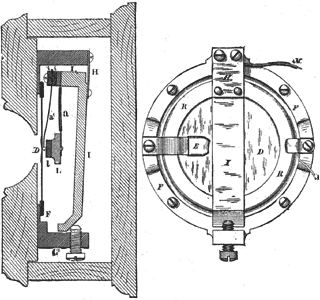 |
| The Blake Transmitter. |
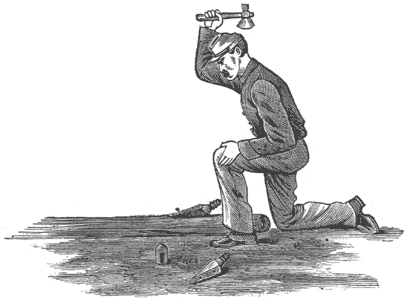 |
| Attaching the Brackets. |
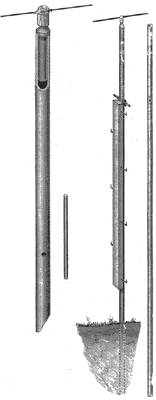 |
| Iron Poles. |
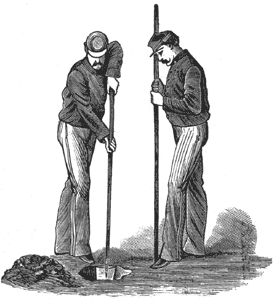 |
| Setting Poles. |
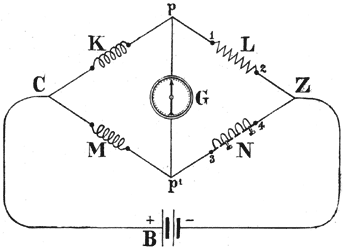 |
| Diagram of Wheatstone Bridge. |
Illustrations are an essential feature in books relating to telegraphy. In "The Practical Telegrapher" this has been borne in mind, and no fewer than 108 cuts, many of which, were made expressly for this purpose, are scattered; through the 189 pages. In order that an opinion may be formed as to the merits of the new cuts we reproduce some of them on this page. The book contains, moreover, many tables of various kinds for reference, and a Dictionary of Technical Terms. The binding, paper and printing are all of the best.
Orders can now be sent in and will be filled at once.
